#apicius
Explore tagged Tumblr posts
Text
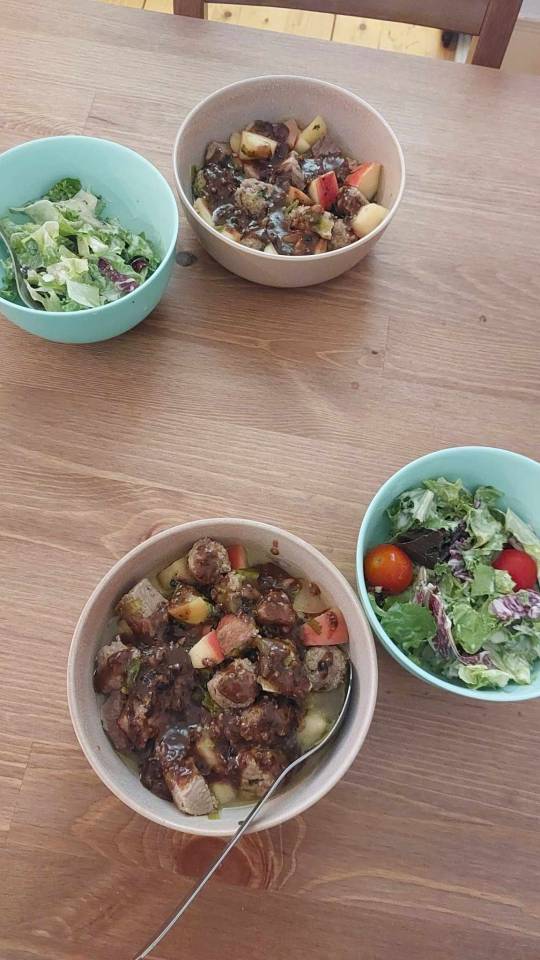

MINUTAL MATIANUM (ROMAN PORK WITH APPLES, 1st c.)
It's a been a tougher week than usual - my husband broke his leg and had surgery, and I'm dealing with some dental pain - but amongst it all, I thought it would be a good idea to treat ourselves with a Tasting History dish that is especially hearty and comforting: Minutal Matianum (Roman Pork with Apples). From the quintessential Roman source by Apicius from the 1st c., De Re Coquinaria, this meat dish is made using ingredients that would have been available to Roman soldiers in Britain, near forts in the area of Hadrian's Wall. This hearty dish was probably closer to what the officers of the Roman army would have eaten rather than the foot soldiers, however. I decided to make this dish because my husband and I have enjoyed most of the Roman recipes I've made so far, and Max exclaimed this was the best Roman dish even he had made so far. We hope this dish provides us with the fortitude of a Roman soldier on the frontiers! See Max’s video on how to make the dish here or see the ingredients and process at the end of this post, sourced from his website.
My experience making it:
As usual for me with Roman recipes, I struggled to compile all of the specific listed ingredients, but I did my best! I sourced a pork shoulder from our local butcher, and for the ground meat, I used a mix of 60% beef and 40% pork (a very common mixture here in Germany). For the pork roast rub, I used oil, a bit of salt, lots of pepper, and a tablespoon and a half of linden tree blossom honey. For the meatballs, I didn't use any egg to bind them, as I didn't have any on hand. Instead of garum, I used an Asian fish sauce (which Max suggests as a substitute). For the apples, I used some sweet Pink Lady apples (which I definitely snacked on while I was cooking). Instead of the long pepper Max used, I used the tablespoon of peppercorns. I decided to omit the asafoetida completely, as I couldn't find it at 4 different supermarkets, including the bio-supermarket and the Turkish supermarket. I've recently learned that I should look instead at an Indian supermarket, so now I'm on the hunt for one! I reduced grape juice myself to make defrutum, as Saba seems a little expensive. Instead of starch/cornflour, I used regular white flour, since I think they would function fairly similarly.
First, I set out making the rub for the pork roast. Nice and simple with olive oil, salt, pepper, and honey, I loved that I could customize this part to my tastes (give me that sharp pepper taste!). Next, because I didn't have a roasting rack, I made one myself out of tin foil by taking a large sheet, rolling it into a snake shape, and curving it into a zig-zag pattern on top of a layer of tinfoil at the bottom of my pan. It fit the pork perfectly, and then I added the rub and tossed it in the oven. My pork shoulder was just over 2 pounds, so I roasted it for just over 2 hours. While it was cooking, I rolled my meatballs (sans egg), ground my spices for the sauce in the mortar and pestle (which took awhile), and chopped and portioned the ingredients for the next steps. When the pork was almost done cooking, I began cooking the meatballs in olive oil, also adding in the leeks. I added in the chicken stock and garum, stirring to get any bits from the bottom to release their flavour.
While this cooked on the stovetop, the pork roast was ready to take out of the oven. It looked wonderful and smelled delicious! I let it sit for a little bit, then chopped it into cubes and added them to the pot with the meatballs. I added in the cilantro, then a little bit more chicken stock so the pork and meatballs were 3/4 submerged and sizzling nicely in the juices. I simmered it for 15 minutes, then added the apple chunks. I simmered it further, but for less than the 20 minutes in the recipe (more like 15). I portioned the meat and apples into our serving bowls to cool a little while I prepared the quick sauce, being sure to leave some of the juices in order to provide the base to the sauce. I added the juices, defrutum, white wine vinegar, garum, and honey to a pot, added the crushed spices/herbs, and brought it to a light boil, stirring often. I made a roux with some flour by mixing a bit of water into it, then added it to my sauce to thicken it. By the looks of it, I think I ended up thickening it a decent amount more than Max did, but I like a thicker sauce, so I wasn't too upset about that. I took it off the heat once it was combined and thickened, and drizzled it over the pork, meatballs, and apples. It looked absolutely scrumptious - the sauce added a nice silky shine to the meat, the leeks added a pretty green, the peppercorns some texture, and the apples a beautiful yellow and red pop of colour. I served the Minutal Matianum with a side Greek Salad to balance the heaviness of the meat.
My experience tasting it:
I made sure my first bite was with pork, apple, and some sauce - it was very tasty! The pork was tender enough, but I might have overcooked it just a little. Luckily, the tougher, hearty texture was balanced by the crisp and light flavour of the apple and the acidity, sweetness, spice-infused, and herbed flavour of the silky gravy-like sauce. Like Max mentioned, the sauce first tastes a bit sour due to the vinegar, but it melts into a sweetness from the defrutum and honey. It is still a very 'Roman' flavour of sauce - I could taste hints of the previous Roman sauces I have made in other dishes in this one, but this one was more like a gravy, and maybe more in line with the modern palate. In terms of herbs and spices, I found that peppercorn and cilantro were the most forward in the sauce - the mint and cumin were just barely there. I decided to make my next bite a meatball with some sauce, apple and leek: an absolute winning combo! I don't always have time to make a pork roast, so I can't see myself making Minutal Matianum often in its complete form, but I will most certainly make the sauce with apples and meatballs again in the future. Like Max, my husband and I both agreed this is our favourite of the Roman dishes I've made so far. This is a great meal for late fall/early winter, and I will probably make it again as the weather gets colder this fall. If you end up making this dish, if you liked it, or if you changed anything from the original recipe, do let me know!
Links to harder-to-find ingredients:
Long Pepper
Flor de Garum
Colatura di Alici (Garum substitute)
Saba (Defrutum)
Asafoetida
Minutal Matianum (Roman Pork with Apples) original recipe (1st c.)
Sourced from De Re Coquinaria by Apicius, 1st century.
Put oil, garum, stock, chopped leek and cilantro and small ground meatballs in a pot. Chop previously cooked shoulder of pork with skin into cubes. Cook all together. Half-way through cooking add cored and diced Matian apples. While it cooks, grind pepper, cumin, cilantro and coriander seed, mint, and silphium root, pour in vinegar, honey, garum, defrutum, and some of the cooking liquid. Adjust the flavors with vinegar. Bring to a boil. Add broken tracta to thicken. Sprinkle pepper and serve.
Modern Recipe
Based on De Re Coquinaria by Apicius (1st c.) and Max Miller’s version in his Tasting History video.
Ingredients:
Roasted Pork
Pork shoulder
Olive oil
Salt
Pepper
Honey
Pork and Apples
1 tbsp olive oil
3/4 lb (340g) ground pork or beef, shaped into 1” balls
1 cup chopped leek
1 cup (235ml) chicken stock, plus extra as needed
2 teaspoons garum*
Small handful chopped cilantro
1 lb (450g) roasted pork, cut into cubes
1 lb (450g) sweet apples, cored and cut into about 1” pieces
Sauce
1 tsp cumin
2 tsp chopped cilantro
1 tbsp coriander seeds
2 tsp chopped mint
4 long peppers or 1 tbsp of peppercorns
1/2 tsp asafoetida
1/4 cup (60ml) white wine vinegar
2 tbsp honey
1 tsp garum*
1/4 cup (60ml) defrutum**
1/4 cup (60ml) cooking liquid from the pork and apples
2 tsp starch or cornflour
*Garum was a fermented fish sauce that was used in a lot of ancient Roman cooking. You can buy a modern equivalent or use an Asian fish sauce.
**Defrutum was a 1/3 reduction of grape must. Today, Saba is pretty much the same thing. It can be expensive, so you can reduce some grape juice instead.
Method:
For the roasted pork: Preheat the oven to 450°F (230°C). Line a baking sheet with foil, then place a roasting rack on top of it.
In a small bowl, mix the olive oil, salt, pepper, and honey. There should be enough to coat the pork roast. Adjust the amounts to your liking.
Brush the olive oil mixture onto the pork, then roast for 15 minutes.
Lower the temperature to 275°F (135°C) and cook for about an hour per pound, or until the internal temperature reaches at least 165°F (74°C).
For the pork and apples: Heat the olive oil in a large pot over medium heat, then add the meatballs and leeks and cook for 8 to 10 minutes, or until they start to brown.
Deglaze the pot with the chicken stock and garum. Toss in the cilantro and roasted pork. Add enough additional chicken stock so that it covers the bottom of the pot.
Simmer for 15 minutes, adding more stock if necessary.
Add the apples, then cook for another 20 minutes or until the meatballs are fully cooked.
For the sauce: Grind the spices and herbs with a mortar and pestle, then put them in a saucepan with the liquid ingredients. Stir together and bring to a gentle boil over medium heat.
Mix the starch with a little water, then add it to the sauce. Simmer for a couple of minutes until it thickens.
To serve: Dish the pork and apples into a bowl, drizzle with the sauce, and serve it forth.
#max miller#tasting history#tasting history with max miller#cooking#keepers#europe#historical cooking#england#great britain#ancient rome#roman meals#roman recipes#1st century#de re coquinaria#Apicius#meat#meatballs#pork#roasts#history
6 notes
·
View notes
Text
Ancient Recipes: Apricot Dessert (Apicius, De re coquinaria)
Did you know when you Google Apicius, they call him a professional chef?

Given that he was the closest thing Ancient Rome had to Betty Crocker or Martha Stewart, we guess it makes sense. These apricots are a fantastic dessert from De re coquinaria (c. 5th cent. CE), arguably the best-known Ancient Roman cookbook. They likely would have been enjoyed at room temperature, but taste fantastic after being chilled. We make this at every rendition of our Ancient Food Day, and it's always a hit.
Latin: duracina primotica pusilla precoquiis purgas, enucleas, in frigidam mittis; in patina conponis; teres piper mentam siccam; suffundis liquids; adicies mel passum uinum et acetum; refundis in patina super precoquia, olei modicum mittis et lento igni ferueat, cum ferbuerit, amulo obligas, piper aspargis et inferes. (De re coquinaria, 4.177)
Translation (by John Liao): Wash firm, early or small apricots, pit them, and put them in the cold [water]. Arrange them in a pan. Crush pepper and dried mint, pour over liquamen and add honey, passum, wine and vinegar. Pour over the apricots in the pan. Add a little oil and heat on a low flame. Thicken [the sauce] with starch while it simmers. Sprinkle with pepper and serve.
Ingredients
10-12 apricots (pitted and halved if fresh, rehydrated in water overnight if dried)
1 ½-2 tbsp freshly cracked black pepper (plus extra for garnish)
1 tbsp dried mint flakes
1 tsp garum/liquamen (substitute fish sauce if you can't find/make it yourself)
3-4 heaping tbsp of honey
3/4 cup of red wine
3/4 cup of passum (also known as raisin wine. Substitutes can include cranberry juice (less sweet), grape juice (more sweet), or ice wine (if you don’t have to make this for a school event).
1 tsp of vinegar (2 tsp if you're not using passum/alcoholic passum substitute)
1 ½ tbsp of olive oil
½ tsp corn starch
3-4 tbsp cold water
Our Recipe
Soak halved, pitted fresh apricots in cold water for 15 minutes (skip if using rehydrated fruit)
In a wide pan (at least 3 inches deep), lightly toast the black pepper and mint at medium heat until fragrant.
Add the liquids: honey, passum, wine, vinegar, and liquamen. Bring to a simmer and stir until well incorporated, and the honey has dissolved. Continue simmering to cook off the alcohol. If the mixture begins to reduce too much, add water in small amounts.
Once the desired amount of alcohol has been cooked off, add the apricots. Continue simmering until apricots reach your desired texture (usually 8-12 mins).
Remove the apricots from the pan. Mix cornstarch with cold water into a slurry, and add to the remaining liquid. Stir and cook until thick, then pour over reserved apricots. Let cool.
Serve chilled or at room temperature, with fresh black pepper sprinkled on top.
Below, we served them with libum (Roman cheesecake) and statites (Ancient Greek spelt crepes).
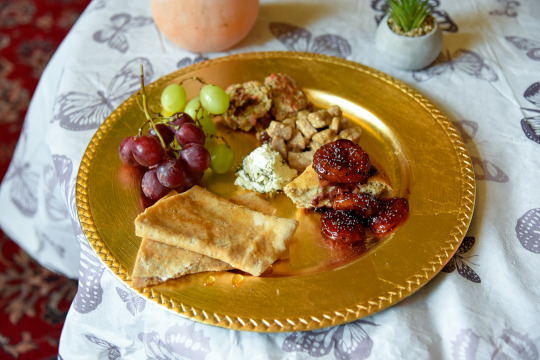
Some more anachronistic ways to serve this can include using it as pie or tart filling, mixing it with Greek yogurt, or serving it with vanilla ice cream while it's still hot (sort of like a poached pear situation).
Some FAQs
Q. "How long do I actually boil the sauce?"
A. As long as you want, depending on how much alcohol you want in the dish (we serve these at school events, so we have to boil it to hell and back to get rid of all the alcohol).
Q. "The ancient recipe says to cook the apricots first, why do you make the sauce first?"
A. When we tried the apricot-first method, the apricots fell apart and turned the whole thing into a jam-like stew because of how long we had to cook the sauce. It tasted great but lacked the nice texture of the whole apricots.
Q. "Can I substitute ingredients 1-1?"
A. Generally, yes. For our passum substitute, we use cranberry juice for its tartness, but any of the three substitutes work. However, if you have the ability to make/buy garum and passum, definitely give it a try!
#the pie version slaps btw i made it for thanksgiving#you just put the apricots and sauce (with cornstarch slurry but no extra cooking) in a blind baked pie shell#and then tuck it into the oven at 375 for about 10 minutes or until the sauce is thick#ancientfoodday#tagamemnon#classics#apicius#ancient rome#classics recipes#cooking#ancient cooking#recipe#ancient history#history#roman history#tagitus
17 notes
·
View notes
Text

Begging Brits to explain this word choice in a copy of translated Apicius I found. Anyway. I hope the faggots are tasty
#a butcher who makes his own sausage and faggots...we call that t4t baby#tagamemnon#apicius#f slur#cw f slur
2 notes
·
View notes
Text
If you want to cook ancient roman stuff, here's a solid translation of De Re Coquinaria:
My absolute favourite Apicius is this, which I eat all the time when I want to feel like I'm a put-upon low-ranking centurion pining for the warmth of the Mediterranean as I sit in my grim outpost in the back of beyond between Cambodunum and Eboracum;
Dulcia domestica- Palmulas vel dactilos excepto semine, nuce vel nucleis vel piper tritum infercies. Sales foris contingis, frigis in melle cocto et inferes.
Home made sweets: Stone some dates, stuff the cavity with nuts (I use chopped pine nuts, walnuts, ground almonds, white pepper, cardamom, and a little bit of honey to make it all stick together), sprinkle with salt (wipe the date with a wet finger, then dab on koshering salt), then fry in honey (heat the honey in a skillet until it bubbles, then quickly add the dates and roll them back and forth until they start to look toasty).
Well I would give a medieval peasant some spaghetti.
81K notes
·
View notes
Text
found an excellent translation of "Apicius de re Coquinaria" translated by Joseph Dommers Vehling at my local wine bar bookshelf, and as a former Latin nerd I enjoyed his translation notes so much.
but not as much as this forward to the book by a former professor of anthropology at the University of Chicago, which alludes to Vehling leading a very interesting life.

"... While the years at Vienna were the happiest of his life, he had a distaste for the "superheated, aristocratic and military atmosphere.' It was at that city that he met the man who was responsible for him coming to America. Were we writing Mr. Vehling's biography, we would have ample material for a racy and startling narrative. We desire only to indicate the remarkable preparation for the work before us, which he has had. A Latin scholar of exceptional promise, a professional cook of pronounced success, and an artist competent to illustrate his own work! Could such a combination be anticipated? It is the combination that has made this book possible." -Frederick Starr, Aug. 3, 1926. Seattle, WA
FRED I beg of you please, tell us the racy and startling narrative. I would like to learn what this implied to be homosexual Renaissance man was up to with his hot American piece of ass.
0 notes
Text
The Apples of France: What’s the (Hi)Story?: Speculations about the Origins of Apples in France (Part II)
Art credit: Pierre Marcel The frosty morning mists of early autumn roll through the hills, swirling like a white cotton-candy carpet at the base of the gnarly old trees. Branches creak and sway with the weight of the fist-sized apples, some blushing like tiny faces, or red-cheeked as it were from the chill of the windy gusts. So much a part of European culture and cuisine, apples seem to be a…
#Apicius#Apples#Culinary History Links and Related Materials#Food History#France#French Cooking#French culinary history#Kazakhstan#La Varenne#Le Menagier de Pari#Marianne Mulon#Tractatus de modo preparandi et condiendi omnia cibaria#Vivendier
1 note
·
View note
Text
Marcus Gavius Apicius – Aşçılık Sanatı (2025)
Marcus Gavius Apicius’un ‘Aşçılık Sanatı Üzerine’ (‘Dē Rē Coquinariā’) adlı kitabı, Antik Roma mutfağına dair günümüze ulaşan en önemli kaynaklardan biridir. Kitap, MS 4. yüzyılın sonlarında derlenmiş olsa da, içerdiği tariflerin büyük bir kısmının MS 1. yüzyılda yaşamış olan Apicius’a atfedildiği düşünülmektedir. Apicius, lüks ve gösterişli yemeklere düşkünlüğüyle tanınan zengin bir Romalı…

View On WordPress
0 notes
Text
Apicius Post: Integratore naturale contro reflusso e indigestione
Apicius Post è un integratore alimentare a base di ingredienti naturali, formulato per aiutare la digestione e contrastare i sintomi del reflusso gastroesofageo. Apicius Post è un valido alleato per la salute del tuo apparato digerente. Come funziona Apicius Post? Apicius Post agisce grazie alla sinergia dei suoi ingredienti naturali: Liquirizia: Lenisce la mucosa gastrica, riduce il bruciore…

View On WordPress
#apicius post#apicius solo natura#benessere digestione#indigestione#integratore naturale#liquirizia#liquirizia per reflusso#reflusso#ReflussoGastroesofageo#rimedi reflusso
0 notes
Text

Behold: the Biblically Accurate Angel Food Cake!
(Inspired by https://www.instagram.com/p/C3djEWBSA8K/ )
Today was my Second Annual Bad Idea Potluck. I make things that I know are great but can't convince other people to try, and also things that sound horrifying but I'm morbidly curious. Other creations from today:
Chicken and vegetable aspic:

Ham salad:
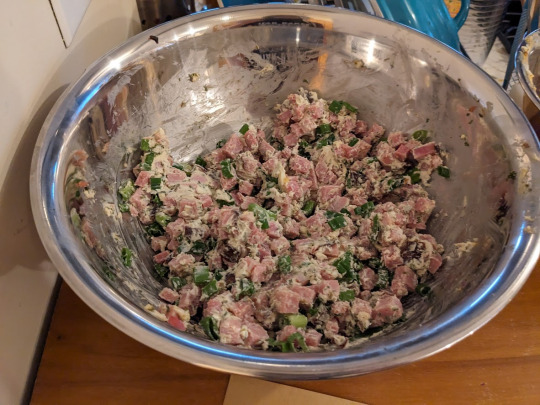
Tomato Soup Cake, from Dylan Hollis. Voted "most better than it sounds."

Bean Pie, also from Dylan Hollis:
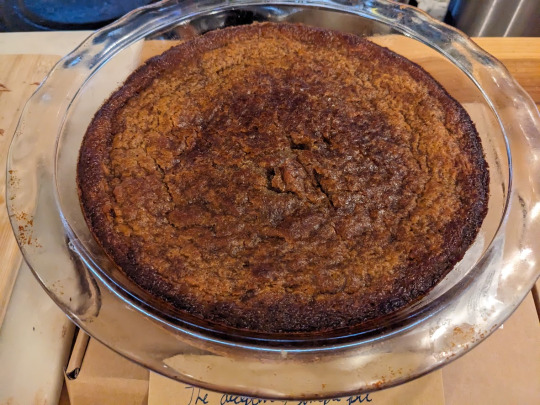
A savory feta cheesecake, with a recipe from Cato:
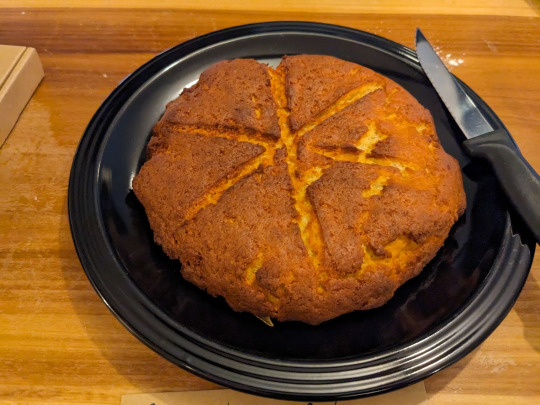
And honeyed mushrooms from Apicius:
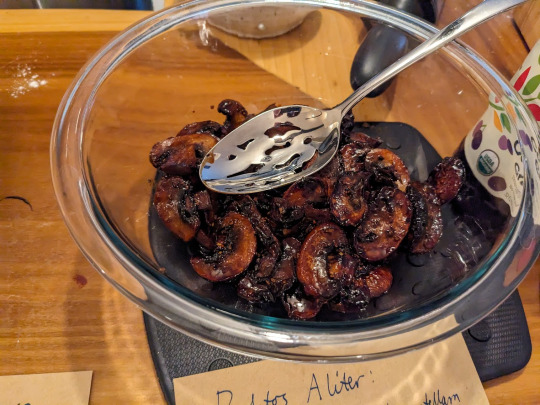
I also made a couple loaves of bread:
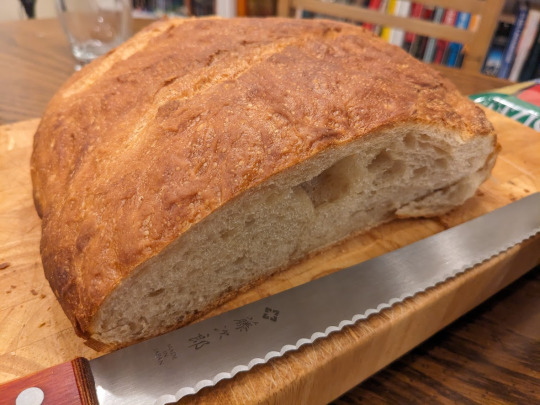
Old Fashioned and Manhattan jello shots (Old Fashioned was too strong but the Manhattan was great):
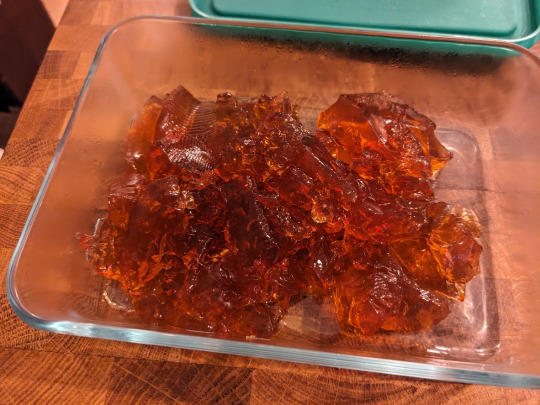
and a bizarre cocktail called the Death Flip (which was truly great, do recommend if you like that sort of thing).
Extremely fun party; will do again.
#food cw#baking#biblically accurate angels#biblically accurate angel food cake#ophanim cake#bad idea potluck#my cooking#ham salad#dylan hollis#tomato soup cake#bean pie#ancient rome#cheesecake#honeyed mushrooms#death flip
57 notes
·
View notes
Text


DULCIA DOMESTICA (ROMAN STUFFED DATES, 1st c.)
To get us through this workweek, I snuck in a mid-week Tasting History recipe - a little something sweet to get us through the next few days of work: Dulcia Domestica (directly translated as homemade sweets), a Roman recipe for stuffed dates from the 1st century. This is one of the very few dessert items mentioned in the earliest Roman cookbook, De Re Coquinaria of Apicius. These specific stuffed dates were a snack available at Ancient Rome's Colosseum during gladiatorial games, among other snacks like sausages and pastries, and they may also have been launched over the crowd as little prizes, like a predecessor to the modern stadium's T-shirt cannon! Most attendees, however, would buy these date snacks from concession workers roaming the aisles of each seating section, much like at stadiums today. The trade of the dulciarius, the sweet shops which produced these stuffed dates, was highly developed at the time of Apicius, to the point that professional bakers and confectioners supplied the entire home market with their sweets, making it rare for a home cook to try and make these themselves. This is largely the same today - making candy is a difficult process, best to leave it to Haribo and the like! This recipe seemed quick and not too laborious, so I just had to try it. I also really wanted to taste an Ancient Roman stadium snack! See Max’s video on how to make this dish here or see the ingredients and process at the end of this post, sourced from his website.
My experience making it:
First off, I halved the recipe (as I often must do with Tasting History recipes), and I decided to use only pine nuts, since I don't really like walnuts. I found some nice, big Medjool dates at the grocery store today on a whim, it seemed meant to be! For the honey, I used German sunflower honey, and I used plain black pepper.
I started by measuring out the honey into a saucepan. Well, I eyeballed it since my honey was quite thick and gloopy. I then sliced the dates open length-wise and removed the pits. Next I crushed the pine nuts with a mortar and pestle. Unfortunately, I seemed to have gotten carried away with this, and I think I may have crushed the pine nuts into too much of a soft crumble. Mine looked less chunky than Max's, at least. Perhaps walnuts are harder to crush? I added the pepper to the crushed pine nuts and mixed until uniform. Next, I stuffed the dates full of the nut mixture with a small spoon, then used the dates' sticky juices to try and seal them up again. It worked fairly well! I prepared a small plate of sea salt and rolled each date in it. I was actually quite surprised to see how well the fine grains of salt stuck to the dates, since the outside of the dates didn't seem very sticky. I warmed up the honey on the stove, and let it bubble for 10 minutes, having to turn the heat down only once due to it boiling up a little too high in the pot. Luckily I caught it before it made a terrible mess from boiling over! I placed each of the dates in the pot and ladled the bubbling honey over each of them with a spoon. They didn't open up at all or lose their filling, which was perfect. I let them cook just over a minute, then scooped them up and let them sit on some tinfoil to cool while my husband and I ate dinner. I transferred them to a plate after, and dessert was ready to be served!
My experience tasting it:
Biting into the stuffed date, the first thing I tasted, overwhelmingly so, was sweetness. However, the salt also came through strongly. I had never really put honey and salt together before in any recipes, but maybe I need to start - what a great combo! I did wish I could taste more pepper, though, since I thought that would add more of a spice. Maybe black pepper is too subtle, and I should have used long pepper instead. Texture-wise, I was not really a fan of this recipe. I had a feeling this would be the case going in, as I am not a huge fan of the texture of dates in general, despite liking their taste. I was expecting more texture from the pine nuts, but I must have ground them too small, as they almost felt like a paste on my tongue. Not my favourite. My husband seemed to like them, however, as he tossed them back and suggested I share the recipe with his mom (will do!). I'm on the fence about this recipe overall, and I'm not sure if I will make it again. If I do, I will not mince the pine nuts to a pulp like I did this time, and I would add more pepper to the mix. I might also take one Tasting History viewer's suggestion and mix the honey with the nut mixture instead of cooking the dates in it, in an effort to tame the sweetness a little. Perhaps I have much to learn from Ancient Rome's dulciarii - I'm sure their versions were much tastier, with the perfect ratio of ingredients. If you end up making this dish, if you liked it, or if you changed anything from the original recipe, do let me know!
Dulcia Domestica original recipe (1st c.)
Sourced from De Re Coquinaria of Apicius (1st c.).
Little home confections (which are called Dulciaria) are made thus: Little palms or (as they are ordinarily called) dates are stuffed - after the seeds have been removed - with a nut or with pine nuts and ground pepper, sprinkled with salt on the outside and are candied in honey and served.
Modern Recipe
Based on the recipe from De Re Coquinaria of Apicius (1st c.) and Max Miller’s version in his Tasting History video.
Ingredients:
15 to 20 large dates, such as medjool
1 cup (125 g) walnuts*
1/3 cup (45 g) pine nuts*
1 tsp black pepper or long pepper
1 cup (235 ml) honey
Fine sea salt
*You can use either all walnuts or all pine nuts if you want.
Method:
Slice the dates lengthwise on one side. Don’t cut all the way through, just enough to open them up so you can fill them. Remove pits if necessary.
Grind the walnuts and pine nuts in a mortar until it reaches the texture you desire.
Grind the pepper as finely as possible.
Mix the nuts and pepper until everything is evenly dispersed. Stuff the dates with the nut mixture. Pack as much of the stuffing as you can into each date, otherwise it’ll all fall out when you go to cook them. Close the date around the filling as much as possible, and continue until all the dates are filled.
Put the fine sea salt in a shallow bowl or plate and roll the stuffed dates in the salt.
Bring the honey to a simmer in a saucepan. Cook the honey for about 10 minutes, keeping an eye on it to make sure it doesn’t get too hot and boil over.
Add the dates to the honey, cut side up so the filling doesn’t come out. Spoon or push the honey over the dates and let them cook for about 45 seconds to 1 minute.
Remove the dates and set them on a plate, a piece of foil, or parchment to cool completely, about 10 minutes.
Once the dates have cooled and are a bit less sticky, serve them forth.
#max miller#tasting history#tasting history with max miller#cooking#keepers#historical cooking#europe#vegetarian recipes#desserts#dulcia domestica#ancient cooking#ancient rome#ancient history#roman meals#roman recipes#dates#honey#nuts#sweets#1st century#apicius#de re coquinaria#italy#snacks#roman history
3 notes
·
View notes
Text
The ancient art of fine cooking
A Culinary Journey Through Ancient Cultures
“If you’re twenty-two, physically fit, hungry to learn and be better, I urge you to travel – as far and as widely as possible. Sleep on floors if you have to. Find out how other people live and eat and cook. Learn from them – wherever you go.”
₊⊹ Anthony Bourdain, 1956 – 2018 ⊹ ₊
The oldest known cookbook—written in cuneiform script—dates back approximately four thousand years and hails from ancient Mesopotamia. A few decades ago, Assyriologist Jean Bottéro delved into the study of ancient cuisine, rediscovering the Yale Culinary Tablets. His work sheds light on the Mesopotamian world and presents forty dishes that contribute to the cultural phenomenon we call gastronomy. (The book is titled The Oldest Cuisine in the World and is available on Amazon.) If you're pondering wine pairings, I should mention that these ancient peoples were beer enthusiasts.
In Greek civilization, recipes are often found within theatrical works, mostly comedies. From Magna Graecia, Alexis of Thurii instructs us in the art of preparing mackerel:
“After removing the gills and cutting around the bones, make a proper cut and open it up completely, filling it with silphium, cheese, salt, and oregano.”
Mackerel is a blue saltwater fish; silphium, a now-extinct plant, produced a potent resin, suggesting we should substitute something similar—perhaps garlic—to approximate the flavor; the cheese used is goat cheese. The dish can be either baked or grilled, and considering the method, the cheese should be soft.
However, purists always have their say. In Hedypatheia, Archestratus of Gela, the first traveler to link food and culture, advises:
“(...) not too much oregano, no cheese, and none of the nonsense.”
Archestratus recommends coating the fish with olive oil and adding a splash of vinegar at the end of cooking. Among the Romans, the illustrious Marcus Gavius Apicius, who can rightly be called the first gastronomist, bequeathed De re coquinaria. Seneca marveled at the delicious creativity of this cookbook, which compiled both popular dishes and Marcus’ own creations ( that we now know under the ostentatious term 'signature cuisine') Particularly renowned are his recipes for lamb and trout stuffed with dried figs.
I can't speak for the trout, but I can certainly vouch for the lamb.
Here’s a version of the recipe for Libum, an Ancient Roman kind of cheesecake:

Libum was originally a sacrificial cake offered to the lares ( I don´t know if there is a word in english: " lares" are household gods) This recipe comes from Marcus Porcius Cato's De Agri Cultura.
Ingredients
1/2 cup plain all-purpose flour
1 cup ricotta cheese
1 egg, beaten
Bay leaves
1/2 cup clear honey
Instructions
Sift the flour into a mixing bowl.
Beat the cheese until smooth, then stir it into the flour.
Add the beaten egg to the flour and cheese mixture, creating a soft dough.
Divide the dough into four portions and shape each one into a bun.
Place the buns on a greased baking tray with a fresh bay leaf underneath each.
Preheat the oven to 375°F (190°C). Bake for 35 to 40 minutes, until the buns are golden brown.
Warm the honey and pour it onto a flat plate. Place the buns on the plate to rest until the honey is absorbed.
#uruguay#montevideo#kitchen witch#kitchen witchcraft#pagan#tarot por kema#witches of tumblr#cooking#kitchen witchery#pagan witch#botica croi#magick#wicca
12 notes
·
View notes
Text
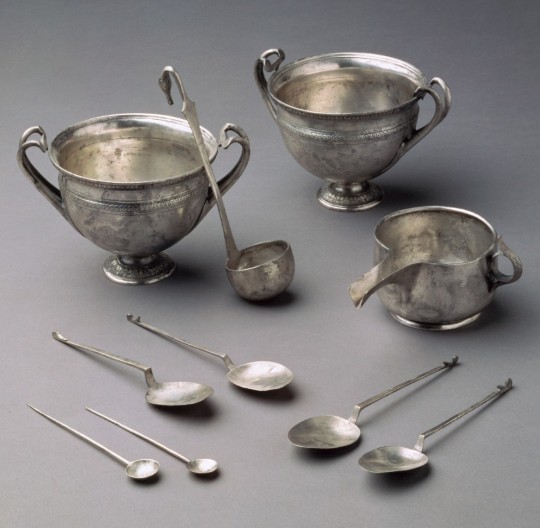
Tableware from the Tivoli Hoard. Roman mid-1st century BCE. x
This group of silver tableware forms part of a hoard, said to be from Tivoli, near Rome. Tivoli was a popular site for luxury villas in the Late Republic, and was to Rome what Boscoreale and Boscotrecase in the Campanian countryside were to Naples. The Tivoli hoard, comprising thirty pieces in all, includes two decorated skyphoi (wine cups), a ladle, a trulla (spouted pitcher), and several spoons, all of which would have been used at dining and drinking parties. Inscriptions on the pair of drinking cups and the ladle give the weight of each piece and the owner's name: "Sattia, daughter of Lucius." The hoard was probably buried as a result of the civil wars and political unrest in Rome during the last decades of the Republic. The elegant soup spoons in this group give a clue to the diverse courses favored in Roman cuisine; the ample bowl of the ladle, like that of the cups, shows an appreciation of wine. We learn details of Roman cuisine through the cookbook of Apicius and the writings of Petronius, Juvenal, and Martial. The dietary preferences of the Romans were remarkably close to the tastes of modern-day Italians. The gustatio, or first course, consisted of shellfish, eggs, or salad. The cena, or main course, featured a succession of roasted meats. The meal ended with sweetmeats and fruits.
184 notes
·
View notes
Text

Analysis of Norton's dish: Roast Beef with Pudding
The pudding is likely Yorkshire Pudding/Plum Pudding
Roast beef with Yorkshire Pudding are traditional dishes in Great Britain, especially in Northern England
Eaten by a variety of people, from the lower classes to the higher classes, and could even be found on the royal family's menu. Commonly served on Christmas day to workhouses/poorhouses.

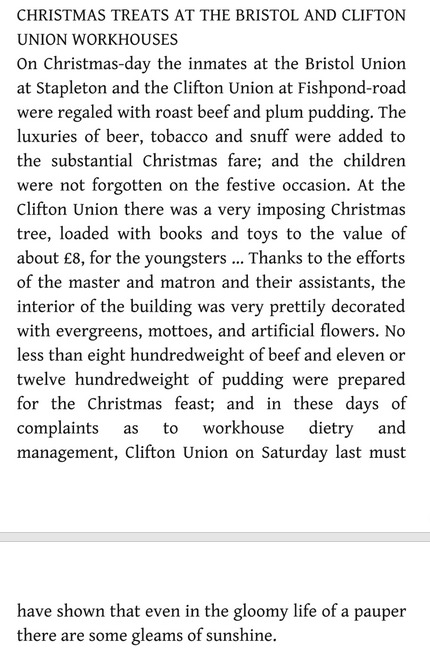
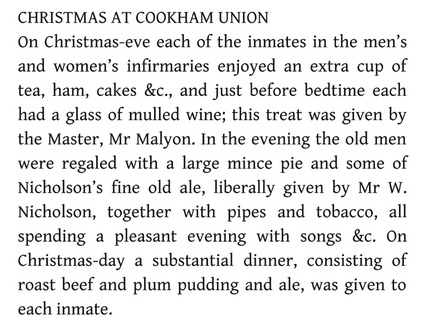

“roast beef served with plum pudding is the most evocative of past traditions of hospitality. It was once Britain’s prime celebration dish and a potent symbol of the nation’s character and cohesiveness.”
Roast Beef
The history of roast beef dates back to King Henry VII in 1485. Henry’s bodyguards (Yeoman of the Guard) received part of their salary in chunks of beef. This practice took place up until the 1800s and allegedly they earned the title ‘beef-eaters’. The story goes that King Henry’s guards started the Sunday roast beef tradition by cooking the meat (usually fillet, sirloin or shoulder) in the morning before going to Mass. The practice became a habit during the 19th century. Women would leave the meat to cook in their village baker’s oven, which closed on Sunday, and pick it up when back from church, perfectly roasted.
Eating beef was reinforced by a tradition outlined in William Kitchiner’s 1871 volume “Apicius Redivivus: Or, The Cook’s Oracle”. In his book, the author recommends eating about 3 kilos of meat per week to stay healthy. This underlined the central role that meat played in the British diet and described the practice of cooking beef sirloin for at least four hours over a spit. Sunday was the one day of the week when people had four hours to spare to roast beef. Fortunately a massive lump of meat could feed the family. They would then use it again in stews, pies and as cold cuts for the rest of the week. As the cost of meat and coal began to plummet working people continued the habit of roasting beef every Sunday.

Yorkshire Pudding
Traditionally, the word “pudding” referred to homely and rustic desserts that were commonly eaten by the lower classes. These could be either sweet or salty. Pudding dishes are mainly made with flour and have a cake-like consistency. But originally, pudding was a meat based, sausage-like food in Britain (ex: black and white puddings). However by the late 1700s, the contemporary puddings were no longer meat based and this change incidentally coincided with the first published mention of the batter pudding.
The Yorkshire Pudding is a baked pudding made from a batter of eggs, flour and milk or water. It has become a common British side dish which is versatile and can be served in many different ways – although mainly recognized as an accompaniment to a roast dinner.
It has been suggested the pudding was given the name “Yorkshire” due to the region’s association with coal and the high temperatures this produced that helped to make crispy batter.
The 1st recorded Yorkshire Pudding recipe appeared in a 1737 book titled "The Whole Duty of a Woman"and was listed as "Dripping Pudding". Wheat flour had come into common use for making cakes and puddings, and cooks in the north of England had begun baking batter puddings while their meat roasted to make use of the fat that dropped in the dripping pan. Batter was placed in a hot pan over the fire with a bit of butter, then placed under a shoulder of mutton in the oven in place of a dripping pan to collect the fat.
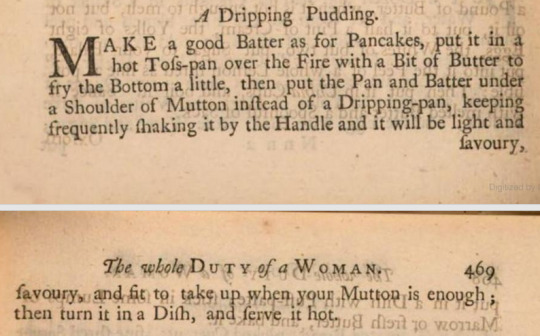
The next recorded recipe launched the pudding from a local delicacy to Britain's favorite dish. It appeared in "The Art of Cookery, Made Plain and Easy" by Hannah Glasse in 1747. Glasse was one of the most famous food writers of the time, and the popularity of her book spread the word of the Yorkshire pudding. This distinguished the light and crispy nature of the batter puddings made in this region from batter puddings created in other parts of England. Back then, the puddings were flatter than they are served today and would be served as a first course filled with thick gravy to help to suppress the diner’s appetite for expensive meat with cheap, plentiful ingredients. The main course of meat and vegetables would traditionally be served with a white sauce, as the gravy used up for the pudding. Poorer households couldn’t afford meat, and would use dripping, flour, eggs and milk to make puddings which would be served with gravy as the only course. Then there was another recipe by Mrs. Beeton, another of Britain's famous food writers of the 19th century, but her 1866 recipe omitted one of the fundamental rules for making Yorkshire pudding: the need for the hottest oven possible. The recipe was also erroneous in instructing the cook to bake the pudding for an hour before placing it under the meat. Yorkshire folk supposedly blamed her error on her southern origins.
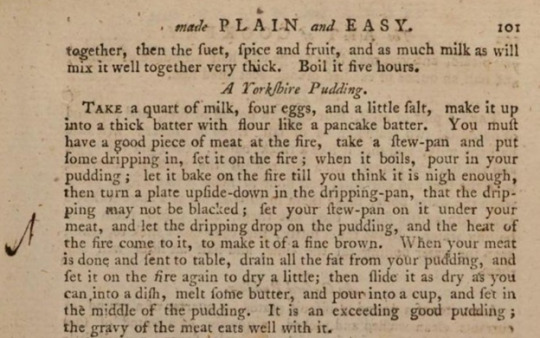
The point of traditional Yorkshire pudding was identified in its previous name, dripping pudding. The batter was placed in a large pan into which had been allowed to drip the fat and juices of meat roasting on a spit over the fire. Once the pan had been heated in the fire and the fat was bubbling, the batter was poured into it and placed under the roasting meat as it continued to turn on the spit, thus catching all the remaining drippings. Meat was very expensive through much of the eighteenth century, and none of it was wasted, even the drippings produced when it was roasted. The fat from the meat drippings provided crucially needed calories, particularly for men doing heavy manual labor. The drippings also imparted a rich flavor to the Yorkshire pudding, and the high heat needed to roast meat was necessary to ensure the pudding would rise and had a light and crispy texture.
Traditional Yorkshire pudding was not served with the roasted meat, it was served before, as an appetizer or starter course. The pudding was cut into smaller pieces which were served drenched with the gravy made from the roasted meat. It is generally believed that this was done to take the edge off the diners’ appetites so that they would be satisfied with the small portions of the much more expensive meat which would be served during the second course. In poorer households, the children would receive only Yorkshire pudding and gravy, while the adults were served both the pudding with gravy and the roasted meat. Since the gravy was usually all consumed with the first course on the Yorkshire pudding, the meat and vegetables which typically comprised the second course were served with parsley or a cream sauce. Though Yorkshire pudding could be made with any roasting meat, the eighteenth-century Englishman was very fond of his roast beef. Thus, by the turn of the nineteenth century, roast beef and Yorkshire pudding had become a quintessential traditional meal throughout England. Even before the Regency, roast beef and Yorkshire pudding were a favorite Sunday dinner, especially among the middle and upper classes. There were even many among the aristocracy who enjoyed such a meal.
Going back to the mention roast beef with yorkshire pudding as common in workhouses on Christmas Day, a ballad was written by George Robert Sims for the Christmas of 1877. It served as a criticism of the harsh conditions in English and Welsh workhouses under the 1834 Poor Law

Regarding the in-game dish, from the looks of it, the roast beef is being served in a large Yorkshire pudding, which isn't too abnormal either (ex: places in Yorkshire sometimes might serve your dinner in a large pudding)
#idv#identity v#norton campbell#prospector#idv norton#identity v norton#idv prospector#identity v prospector#sirenjose analyses and theories
56 notes
·
View notes
Text
@118dailydrabble Day 42: Lasagna
Buck/Eddie || Rated: G || Tags: Domestic Fluff
“And did you know that the Ancient Romans had a dish that was similar to lasagna called lasana, which is Latin for a container or pot. It’s described in this thing called the Apicius, which is like, an old Roman recipe book.”
Eddie looks over at Buck, fully ensconced on the couch underneath his laptop and a blanket, chewing on the end of his hoodie tie. Eddie grins at Christopher over the kitchen table.
“Okay.”
“Which is interesting because there’s actually a bunch of theories about where the word comes from,” Buck continues. “Could be a Greek word describing the shape of pasta.”
“How many tabs do you have open?”
“Uhm…”
“Under or over 30?”
Buck smirks. "Over."
(collection on AO3)
8 notes
·
View notes
Text
I did a tour of GO filming locations
It was around London, so I didn't get all of them, but the trip has been such a blast I just have to share the pics!


1. St James park: so many birds! And tourists. Which is good because the secret government agents wouldn't be able to feed so many ducks. I saw pelicans too—they were huge and pink and funny!!


2. Berkley Square (they actually didn't film anything here, but still): it's a giant construction site now. The only birds I spotted were parrots, so many of them, at least 5 nests, and loud too. No sane nightingale would ever come there, this much is true. But the song is referenced on one of the bench plaques <3


3. The Ritz / The Criterion: they both look nothing like the restaurant in the show (maybe the Criterion changed since 2019?) But both are fancy! When my rich uncle leaves me a giant inheritance and I find my 6000 year soulmate, I am so taking them out there, just you wait.

4. The Globe: this is my favourite theatre now!!!Macbeth was magnificent! And the standing tickets were so worth it: actors were down in the crowd and interacted with everyone! I got some of Macduff's blood on me! (Can't get this anywhere else :D) The Globe is closed in winter, so I'm already planning to buy tickets for next year.


5. The Bandstand and the-place-where-Gabriel-was-running: after marinating on Tumblr for so long I felt shocked seeing the word "bandstand" on a physical sign in the park. Like, put up a warning at least, my heart needs to be prepared?? The actual bandstand was at the same time smaller and bigger than I expected. Also those red bits—apparently they were there the whole time; I was imagining it black and white for some reason.
Also I met another crazy fan taking pictures of the bandstand in the rain, and I remember thinking, they have to be just as crazy as me xD

6. Tavistock square (where they switched bodies): the filming crew must have moved the benches around, because the square itself is so tiny and you can only match the scene background if you stand all the way back in the bushes. Surely there must have been a better way.


7. Crystal palace: just as I suspected, you can't see the dinosaurs from the bench because of all the trees in the way. The dinos are hilarious though, they look more like🗿and not like 🦖. In the show Warlock seems to have written a rude word on the teleosaurus info card, how dare he!


8. Tadfield (Hambleden, really): I thought, it's just two hours from London, easy day trip, in and out, what could go wrong. Cue to me stumbling over muddy fields in the dark surrounded by menacing sheep and regretting everything. The village is cute and English and has literally three streets and a post office and nothing else. And sheep.

9. Bonus round, my take on Aziraphale's bookshop xD "Seducing women? I think you've got the wrong shop!"
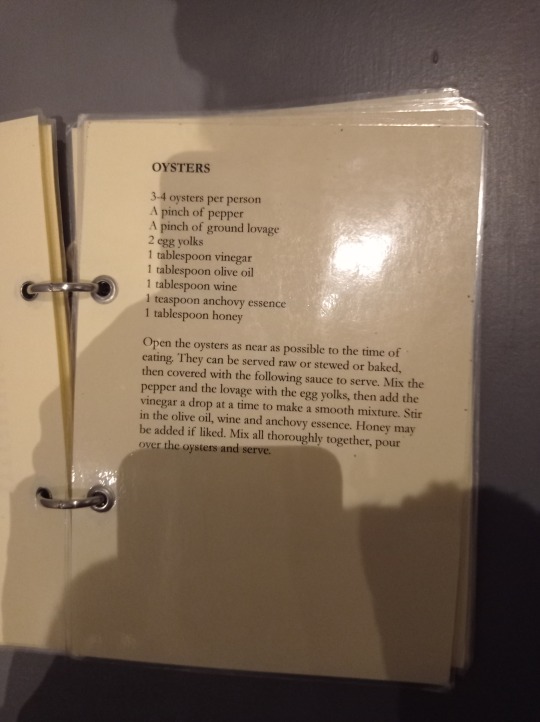

10. Bonus bonus round, food! (am I or am I not the ace of snacks after all?) An oyster recipe from Marcus Gavius Apicius' cookbook (Rome, 1c CE, stumbled upon it in the museum of Reading), and Eccles cakes (soooo sweet they don't calm people down but give them instant diabetes)
And that's it!! Thank you for reading all the way <3 Here is a secret snack 🍎
64 notes
·
View notes
Text
Honey, I'm Cooking!
As an infant, Zeus, the Greek god of gods, fed on milk and honey, or so the story goes. And in Exodus 3:8 (KJV), Moses states, “And I am come down to deliver them out of the hand of the Egyptians, and to bring them up out of that land unto a good land and a large, unto a land flowing with milk and honey … “ By these ancient words, we know that honey served as an important food for humans and not…
#Apicius#Bartolomeo Scappi#Cheesecake#Cooks#Gingerbread#Honey#Martha Washington#Mary Randolph#Scappi&039;s Opera#Zeus
0 notes